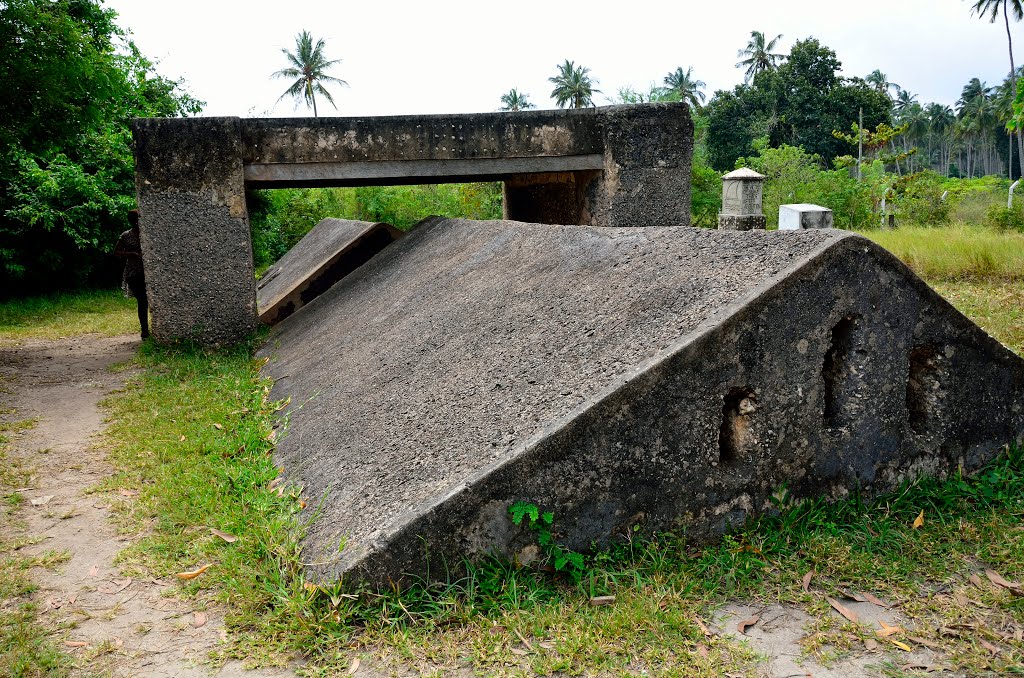Mangapwani Coral Cave
Mangapwani (meaning 'Arab shore') lies on the coast, about 20km north of Zanzibar Town. The Coral Cave is a deep natural cavern in the coralline rock with a narrow entrance and a pool of fresh water at its lowest point. Water was probably collected from here by early inhabitants of this part of the island but at some time in the past vegetation grew across the entrance and the exact position of the cavern was forgotten.
Later, the area became the property of a wealthy Arab landowner called Hamed Salim el Hathy who had many slaves working on his plantations. During this time, the cavern was rediscovered by a young boy searching for a lost goat. Local people were able to use the water again, and Hamed Salim arranged for his slaves to collect the water regularly for his own use. It has been suggested by historians that the cave may have been used as a hiding place for slaves after the trade was officially abolished in 1873.
Mangapwani Slave Chamber
The Mangapwani Slave Chamber is a few kilometres further up the coast from the Coral Cave. Although sometimes called the Slave Cave, it is a square-shaped cell that has been cut out of the coralline rock, with a roof on top. It was originally built for storing slaves, and its construction is attributed to one Mohammed bin Nassor Al-Alwi, an important slave trader. Boats from the mainland would unload their human cargo on the nearby beach, and the slaves would be kept here before being taken to Zanzibar Town for resale, or to plantations on the island. It is thought that some time after 1873, when Sultan Barghash signed the Anglo ~ Zanzibari treaty which officially abolished the slave trade, the cave was used as a place to hide slaves, as an illicit trade continued for many years.

Later, the area became the property of a wealthy Arab landowner called Hamed Salim el Hathy who had many slaves working on his plantations. During this time, the cavern was rediscovered by a young boy searching for a lost goat. Local people were able to use the water again, and Hamed Salim arranged for his slaves to collect the water regularly for his own use. It has been suggested by historians that the cave may have been used as a hiding place for slaves after the trade was officially abolished in 1873.



